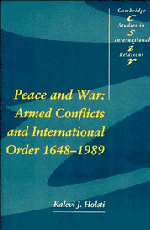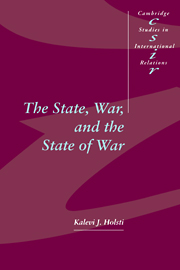When thinking about war, we usually conjure up the image of two countries arraying their military forces against each other, followed by combat between distinctively designated, organized, and marked armed forces. The purpose of fighting is to destroy the adversary's capacity to resist and then to impose both military and political terms on the defeated party. This was the pattern in the 1991 Gulf War, World War II, and World War I, to mention several of the most famous wars of this century. Diplomatic practitioners, military leaders, and academic experts on international politics typically regard war as a contest between states. This characterization of war is also found in the Charter of the United Nations, in hundreds of bilateral and multilateral treaties between states, in government defense ministries, and in standard textbooks on international politics and security studies.
War defined as a contest of arms between sovereign states derives from the post-1648 European experience, as well as from the Cold War. It is historically and culturally based. In other historical and geographical contexts, wars have been better characterized as contests of honor (duels), marauding, piracy, searches for glory, and pillaging forays. Armies, navies, gangs, and hordes battled, sometimes in quick but massive battles, at other times in decades-long campaigns. They represented clans, tribes, feudal barons, city states, empires, and religious orders such as the Templars and Hospitallers. For many, such as Genghis Khan's hordes, war was at once a style of life, an economic system, and an instrument of the Khan's temper to punish those who offended him.

